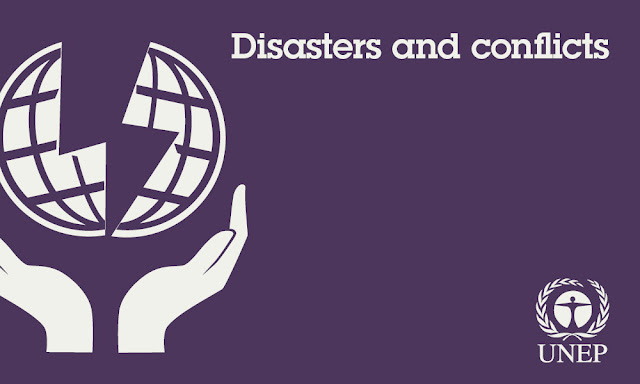At a November
Environmental Security Assessments conference on methodologies and practices, held jointly by
ENVSEC and
IES outside of Brussels, I had the opportunity to catch up with David Jensen, a policy and planning coordinator in the UN Environment Programme’s (UNEP)
Post Conflict and Disaster Management Branch (PCDMB).
Jensen pointed to several upcoming reports coming from UNEP and expressed some relief that the concept of environmental security was finally getting some recognition without having to constantly be “banging on doors.”
PCDMB is a branch of UNEP created to provide five core services to UN member states: post-crisis environmental assessments; post-crisis environmental recovery; environmental cooperation for peacebuilding; disaster risk reduction; and, most recently, humanitarian action and early recovery.
There has been a steady stream of activity flowing from PCDMB and a lot to look forward to this spring:- The guidance notes on conflict prevention and natural resources, recently published on the PCDMB website, are draft notes that will be revised following pilot programs in four countries (Jensen particularly noted that there is much work to be done on them still). Ultimately, they hope to identify funding for 100 experts to deploy to countries (at the country’s request) to apply the guidance notes in the field.
- PCDMB has a project of 150 case studies coming out in six volumes in February 2011 on natural resources and peacebuilding.
- The culmination of a three-year UNEP project in Nigeria, which includes a full analysis and remediation plan of 300 oil-contaminated sites in the Ogoniland region of the Niger Delta, is expected to be released in the second quarter of 2011. (Editor’s note: though not finished, the report caught flack last summer over concerns that it will largely exonerate Shell.)
- PCDMB is also partnering with UN’s Department of Peacekeeping Operations and the Department of Field Support to assess options for resource-efficient technologies and practices in peacekeeping camps (the so-called “green helmets“). They will be issuing a policy report on best practices in May 2011.
Finally, it sounds like PCDMB is getting some recognition from within the upper echelons of the UN. Jensen has been asked to brief senior peacebuilding officials, and the Secretary-General’s political advisor called him in to talk about peacekeeping and natural resource management and conflict prevention.
In an interview with ECSP last fall, Jensen predicted the UN was finally approaching a fundamental tipping point for inclusion of natural resource issues in the broader peacebuilding process, and the kind of interest noted above appears to be proving him right.
In a report this summer, Secretary-General Ban Ki-moon noted the need for inclusion of environmental security in peacekeeping operations and highlighted the particular work of PCDMB in places like Afghanistan, Timor-Leste, and the Sudan.
It’s no surprise then that when Jensen briefed the full Secretariat, he said he was greeted by a packed house.
Image Credit: Arranged from “UNEP and Disasters and Conflicts at a Glance,” courtesy of UNEP.
 A Publication of the Stimson Center.
A Publication of the Stimson Center.







